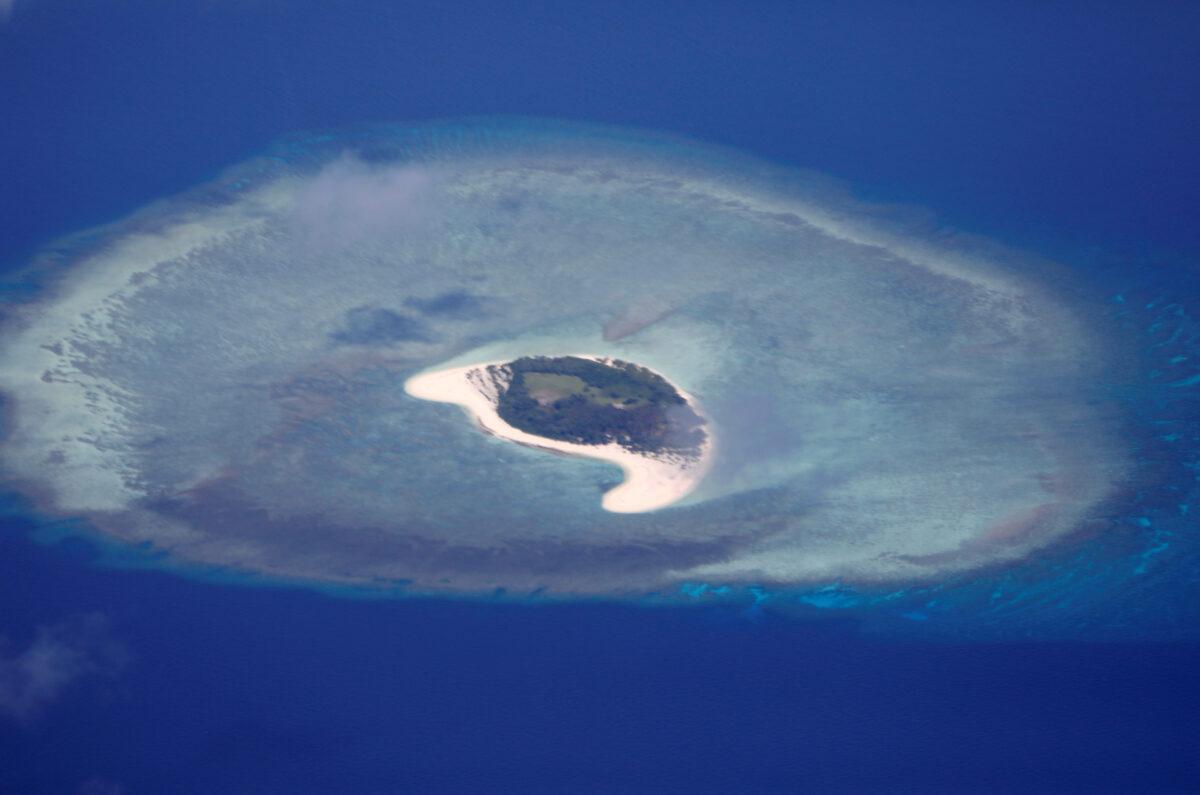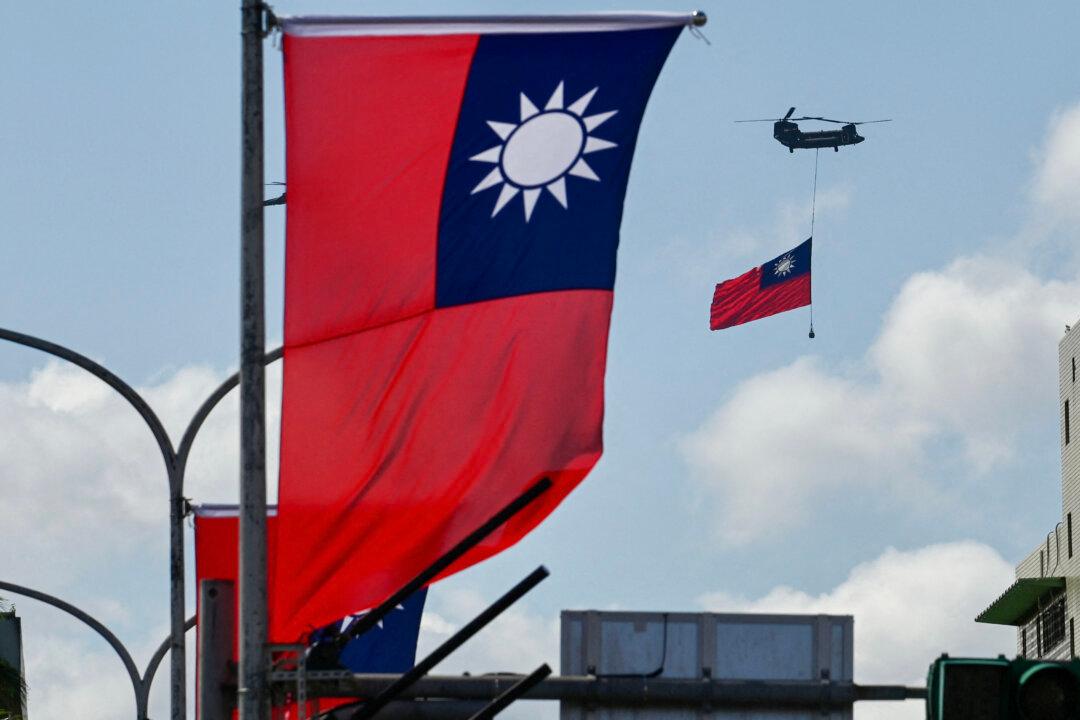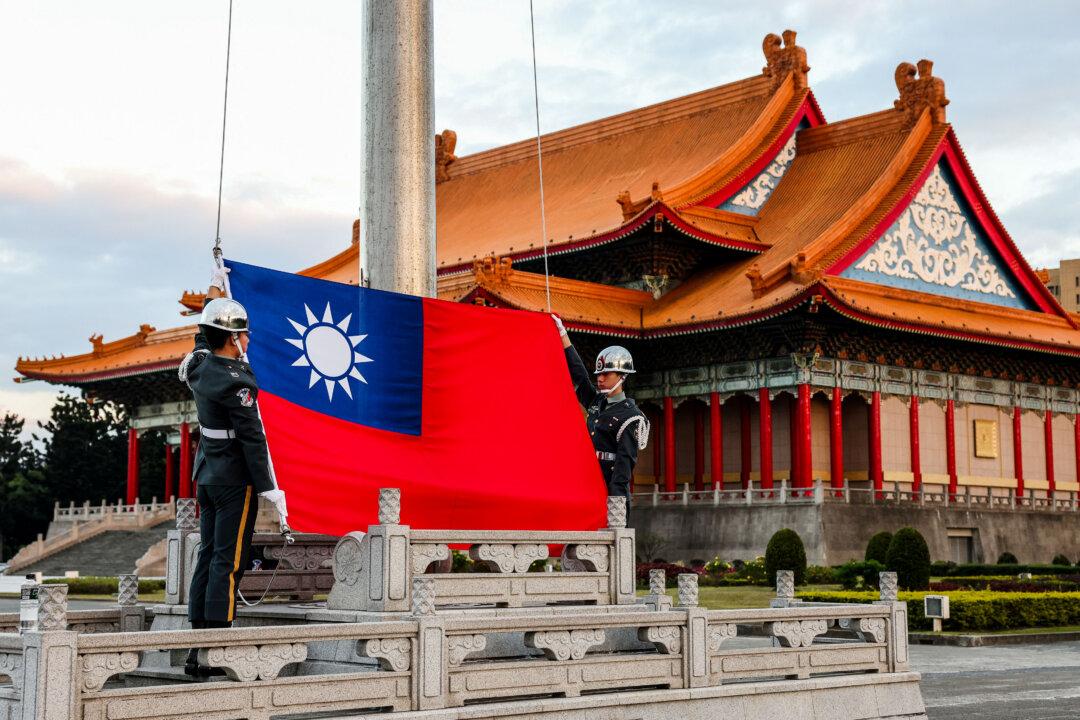The Chinese regime aims to seize all of the South China Sea to eventually control parts of the wider Indo-Pacific and challenge U.S. dominance in the region, according to a well-known Chinese professor.
The plans illustrated by the professor, who also advises the Chinese Communist Party (CCP), stand in stark contrast with the CCP’s public declarations on its behavior in the waterway.
The communist regime has consistently portrayed itself as a non-aggressor in the territorial dispute. China’s Foreign Minister Wang Yi, in a September statement, said the regime “follows a policy of pursuing amity and friendship with its neighbors” with regards to the South China Sea.
CCP’s Tactics
Jin boasted about the regime’s success in snatching control of Mischief Reef and Scarborough Shoal from the Philippines in 1995 and 2012 respectively.“After we occupied [Mischief Reef], we drove away the Philippines’ fishermen. So the Filipinos were very upset,” Jin said. “Their fishermen had been there fishing for thousands of years.”
In 1995, Beijing began to occupy Mischief Reef, located within the Philippines’ 200-nautical-mile exclusive economic zone (EEZ), by building huts that it claimed were shelters for Chinese fishermen. The construction effort angered Manila but Washington did not take a side at the time.
“[The U.S.] takes no position on the legal merits of the competing claims to sovereignty over the various islands, reefs, atolls, and cays in the South China Sea,” the U.S. State Department stated in 1995.
In April 2012, the spotting of eight Chinese fishing vessels anchored at Scarborough Shoal, a reef 120 nautical miles from the main Philippine island of Luzon, precipitated a naval standoff between the Philippines and China. The United States brokered a deal to defuse tensions, but Beijing later reneged on the deal and has blocked Filipino fishermen from fishing in the area.
Jin highlighted the effectiveness of using Chinese fishing boats to advance the CCP’s ambitions in the region. Even if the Philippines decided to hand over to the United States all of its territory in the South China Sea, U.S. forces wouldn’t be able to defend them from China, he said. The Philippines currently occupies at least eight reefs, shoals, and islands, in the Spratly archipelago.
“If the United States stations an aircraft carrier there, China can simply send 2,000 fishing boats and surround the carrier. The carrier doesn’t dare to fire at the fishing boats,” Jin said.

The article pointed to the Scarborough Shoal standoff as one of several incidents when China used its militia to assert maritime claims in the South China Sea.
“We call on Beijing to stop using its maritime militia to intimidate and provoke others, which undermines peace and security,” Price wrote.
String of Pearls
Seizing the South China Sea is also critical to the CCP’s plan to challenge the United States’ influence in the Indo-Pacific region, Jin said.“If the United States loses control of the Indian Ocean, it would lose its influence in the Middle East. Then the United States would lose its No. 1 standing in the world,” he said.
“We are working on a string of pearls strategy in the northern Indian Ocean, with bases stretching from Thailand, Burma, Bangladesh, Sri Lanka, and Pakistan. If we complete this string strategy and own the South China Sea, we can wipe out the U.S. naval base at Diego Garcia in minutes.”
China’s “string of pearls” is a concept first coined in a 2005 Pentagon report used to describe how China intends to project its influence in the Indian Ocean by leveraging a network of Chinese military and commercial sites in South Asian countries. While CCP officials have publicly denied that Beijing was pursuing such a strategy in the Indian Ocean, the Chinese regime has over the years taken control of several seaports in the Indian Ocean in the form of a lease.
“If the BIOT is ceded to Mauritius, I have little doubt it will not be long before the naval facilities at Diego Garcia join Xi Jinping’s ‘string of pearls’—and become an anchor for a very different world order,” Kawczynski wrote.

Seizing Taiwan
Having total control of the South China Sea would just be the first step, according to Jin. With the United States out of the picture in the area, he said the next target would be Taiwan.At that time, Jin said that China’s large military presence in the region alone could force Taiwan to surrender without shedding blood.
“If Taiwan surrenders, the United States does not have any reason to interfere,” Jin explained.
The CCP sees Taiwan as a renegade province that must be united with the mainland, even though the communist regime has never ruled the island. The Republic of China, Taiwan’s official name, is a de facto independent entity with its own democratically-elected officials, military, constitution, and currency.
With China having the South China Sea and Taiwan in its possession, Jin said Washington would see Beijing as an “equal partner.”
“As equal partners, China and the United States would be able to cooperate on many issues … this would be good for the entire world,” Jin added.
An overwhelming majority of Taiwanese people have rejected unification with the mainland.
According to a March telephone poll of 1,078 locals conducted by Taiwan’s Mainland Affairs Council, a government agency responsible for cross-strait issues, only 2.3 percent of respondents said they wanted to unite with the mainland as soon as possible, while 5.3 percent said they wanted to maintain the status quo and reunite with the mainland at a later date.
Meanwhile, 6.5 percent wanted Taiwan to formally declare independence as soon as possible; 25.1 percent wanted Taiwan to maintain the current status quo and move toward an independent nation later; and 27.3 percent wanted Taiwan to maintain the current status quo forever.
Over 28 percent said that they wanted to maintain the current status quo and then make a decision on unification or independence later, while the remaining 5.4 percent did not have an opinion.







